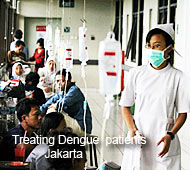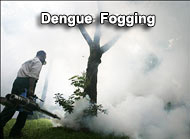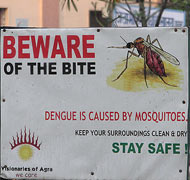Duncan MacDonald
Jakarta 4 June 2010
What is Dengue Fever ?
Dengue fever is a virus transmitted by mosquito. The Aedes aegypti mosquito is the main transmitter of dengue viruses, although a 2001 outbreak in Hawaii was transmitted by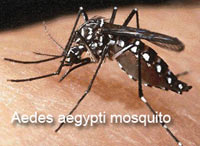 Aedes albopictus. Both mosquitos feed exclusively during daylight hours.
Aedes albopictus. Both mosquitos feed exclusively during daylight hours.The disease occurs only in the tropics. Dengue is a disease caused by any one of four related viruses (Dengue 1, 2, 3 and 4). A person infected with one type of dengue will in future only be immune to that type. However they will be at risk of developing severe symptoms if they contract another type of dendue.
Unlike malaria, dengue is prevalent in urban areas as well as rural districts. It is estimated that there are over 100 million cases of dengue worldwide each year. The disease is now endemic in more than 100 countries.
Aedes mosquitos can be born with dengue virus inherited from their mothers. A mosquito hatched in your own yard and never going anywhere else, can transmit dengue fever [1]
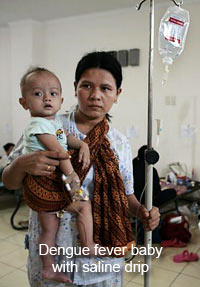
Dengue fever symptoms
Symptoms are most commonly seen in adults and older children. Young children may show no symptoms. Death rarely occurs, but the patient is left debilitated and requires considerable convalescence.Typical symptoms may include:
• sudden onset of fever - lasting 3 to 7 days
• muscle and joint pain - ankles, knees and elbows - why it is sometimes called Breakbone fever
• headache, eye pain and severe dizziness
• unpleasant metallic taste in mouth, loss of appetite, vomiting, diarrhoea, abdominal pain
• flushed skin on face and neck, fine skin rash as fever subsides
• rash on arms and legs, severe itching, peeling of skin and hair loss
• minor bleeding - nose or gums - and heavy menstrual periods
• extreme fatigue [2]
Dengue haemorrhagic fever symptoms
Characterised by a breakdown of the blood-clotting mechanism with internal bleeding. More common in children under 15 years, but can occur in adults.Go immediately to an emergency room or the closest health care
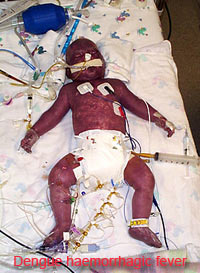 provider if any of the following warning signs appear:
provider if any of the following warning signs appear:• severe abdominal pain or persistent vomiting
• red spots or patches on the skin
• bleeding from nose or gums
• vomiting blood
• black, tarry stools (faeces, excrement)
• drowsiness or irritability
• difficulty breathing
• perhaps shock and sometimes death [3]
History
The first recorded case of probable dengue fever is in a Chinese medical encyclopedia from the Jin Dynasty (256-420 AD) which refed to a "water poison" associated with flying insects.The first recognised dengue epidemics occurred almost simultaneously in Asia, Africa and North America in the 1780's.
A pandemic began in Southeast Asia in the 1950's. By 1975 Dengue Haemorrhagic Fever had become a leading cause of children in the region. Epidemic dengue has become more common since the 1980's.
By late 1990's dengue was the most importaint mosquito-borne disease afecting humans after malaria, with up to 100 million cases of dengue fever and several hundred thousand cases of dengue haemorrhagic fever each year.
The first confirmed case report dates from 1789 by American Benjamin Rush, who coined the term "breakbone fever".[4]
That the virus was transmitted by mosquitos was discovered by Australian doctor Sir John Burton Cleland (1878-1971) of Adelaide University in the 1940's.[5]
Treatment
No specific antiviral treatments exists of a dengue infection. Nor is there any vaccine currently available.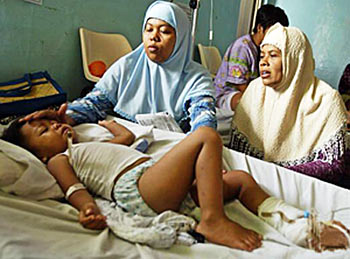
Persons who think they have dengue should use analgesics (pain relievers) with acetaminophen and avoid those iburofen, Naproxen, asprin or aspirin containing drugs.
They should also rest, drink plenty of fluids to prevent dehydration, avoid mosquito bites and consult a physcian.
For patients with dengue haemorrhagic fever as with dengue, there is no specific medication. If a clinical diagnosis is made early, a health care provider can effectively treat DHF using fluid replacement therapy (saline drip). This generally requires hospitaisation.[6]
Research
Wolbachia bacterium Scientists from the School of Integrated Biology at University of Queensland revealed in 2009, that by infecting Aedes mosquitos with the bacterium Wolbachia, the adult lifespan was reduced by half. The study involed injecting 10,000 mosquito embryos with the bacterium, using super-fine needles.Once an insect was infected, the bacterium would spread via its eggs to the next generation. A pilot release of infected mosquitoes could begin in Vietnam within 3 years. If no problems are discovered, a full-scale biological attack against the insects could be launched within five years. [7]
Sterile insect technique is a form of biological control, has long proved difficult with mosquitos because of the fragility of males. However a transgenic (an organism whose genetic material has been altered using genetic engineering techniques) strain of Aedes aegypti was announced in 2010 which might alleviate this problem: the strain produces females that are flightless and so can neither mate nor bite.
The genetic defect only causes effects in females, so that the male can act as silent carriers. Given enough generations of transgenic males, the entire strain could die out. [8]
Conclusion
The primary prevention of dengue relies mainly on mosquito control. Periodic draining of all standing water containers such as plastic cups, used tires, flower pots, etc reduces the breeding ground for mosquitos.Fogging with inseciticide to reduce the adult mosquito population is only somewhat effective. Most mosquitos hide under plant leaves during daylight hours and so are not affected by fogging.
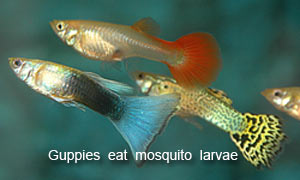
Put guppies and minows in any fishponds, bird baths or waterfalls you have in your yard. They eat mosquito larvae. Larger fish do not pay much attention to mosquito larvae and they may eat your guppies instead. Keep algae and dead leaves off the surface of the water - this provides larvae effective cover from feeding fish.
Mosquito nets, typically draped over beds are great protection against night-biting mosquitos, such as the ones carrying malaria. Unfortunately our day-biting dengue mosquito is not interested in your bed. If you have an infant in a crib or toddler in a play-pen, mosquito netting over them in the daytime provides excellent protection.
Wearing DEET based repellant is not an appealing prospect and is not recomended. Be aware DEET is known to be toxic to small children and should not be used on them. If you do use DEET on yourself or older children, a formulation between 30% and 40% works best.
Clothing frustrates biting mosquitos. The more skin you cover, the less likely you will be bitten. [9]
This Digest article can be downloaded as a FREE e-book on Smashwords. Available on iPad / iBooks, Kindle, Nook, Sony, & most e-reading apps including Stanza & Aldiko.
Just click the following link
>> download free e-book dMAC Digest Vol 4 No 4

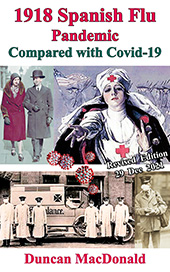

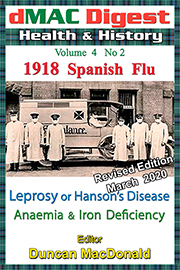






Adelaide-University-190a.jpg)

